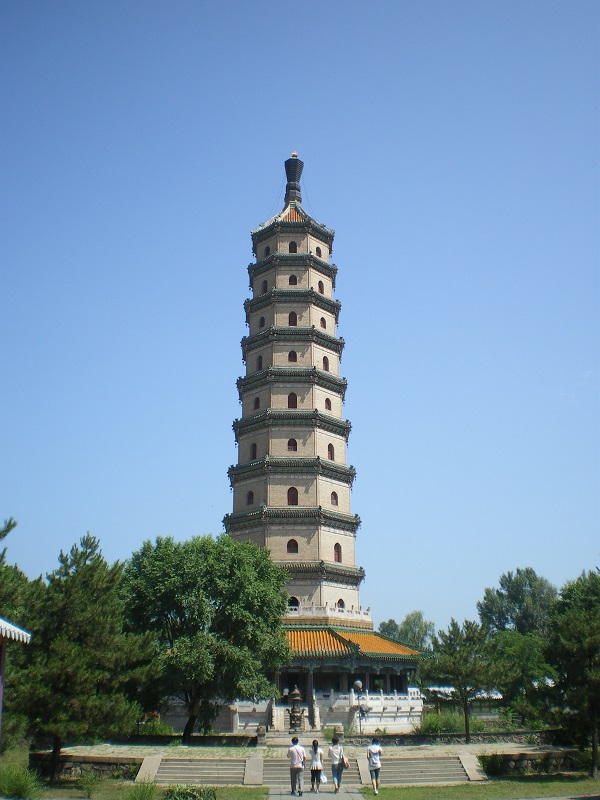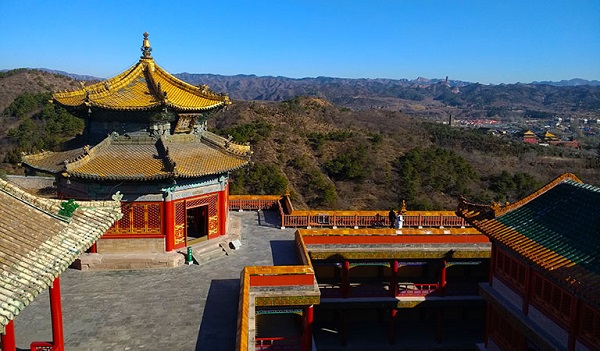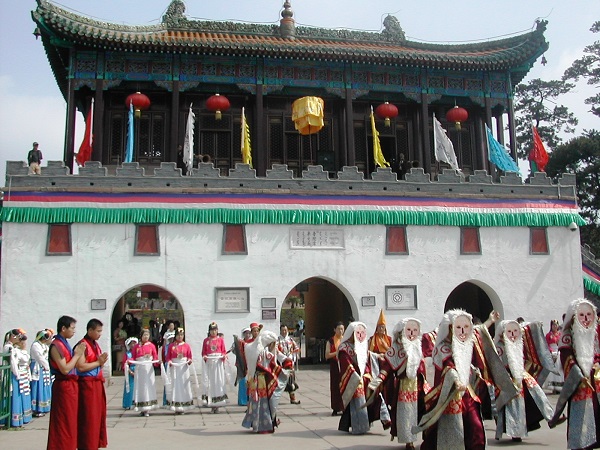Written by: Mahnoor Fatima
Posted on: June 02, 2021 |  | 中文
| 中文
A tower on the Little Golden Mountain at Chengde Resort
Sitting comfortably in the majestic mountains of northwest China, the Chengde Mountain Resort (also called Rehe Temporary Palace) is a historically rich and visually gorgeous complex that covers over 5,640,000 square metres. This vast collection of palaces, administration centres and ceremonial buildings in various styles, blending harmoniously into a landscape of lakes, pastureland and forests.
The resort is one of the final great architectural feats of feudal society in China, and was declared a UNESCO World Heritage site in 1994. It is located about 3km away from the downtown area of Chengde in the Hebei province (which is at about 225km distance from Beijing on the northeastern side). It is now considered one of the Four Classic Gardens in China, alongside the Summer Palace (Beijing), Humble Administrator’s Garden (Suzhou) and the Lingering Garden (Suzhou).
Construction of the resort started in 1703 during the reign of Emperor Kangxi of the Qing Dynasty (1636-1912), and took almost 90 years to complete. It was built besides the Mulan Hunting Grounds to offer a retreat from the grand and solemn Forbidden City in the summer. It regularly housed the royal family, and extra residential areas were made for foreign dignitaries.
Both the Mountain Resort and surrounding areas are classic masterpieces of gardening art, Chinese palace and religious architecture. Following the natural landscape of the hills and water, the Resort integrates with the environment and carries forward China’s imperial gardening tradition. The influence of Chinese geometric culture as practiced at the resort was so significant that it impacted gardening practices in Europe in the 18th Century, as the interest in landscape design grew.
The resort itself is divided into four main areas: The Palace Area, Lake Area, Plain Area and Mountain Area. The largest section is the Mountain Area, covering 80% of the landscape across four valleys that run south to north and impede the cold winds. The Lake Area is divided into islets around 8 beautiful lakes. Whereas the Plain Area is located at the foot of the mountain and is populated with grass and trees. Finally, most of the business and residence is located in the Palace Area, which is now used as the Mountain Resort Museum.
The Museum itself is a fascinating look into the lives of the royal family members who called it home. The collection contains over 30,000 cultural relics, 21 notable inscriptions and more than 28,000 important historical texts. But even the architecture and interior is special, incorporating classical Chinese aesthetics which have been carefully preserved.
While the Palace grounds display typically Chinese designs and motifs, the twelve Outlying Temples beyond the Resort grounds, merge these features with the architectural styles of the ethnic minorities of China. This helped safeguard the Mountain resort by fostering better relations with minority groups, who would be regularly invited for the Mulan Autumn Hunting Season and other diplomatic missions. Such a strategy proved vital in consolidating and developing China as a unitary, but diverse state in the later centuries.
While the entire resort is too vast to experience in one go and on foot, there are some special places which get the most tourists. Some of the key attractions there besides the museum are the Jinshan Mountain (Lake Area), Yanyu Tower (Palace Area), Shuixin Pavilions (between the Palace and Lake area). Many travelers often linger around the Lake area and take boat rides as a way to relax and take in the spectacular scenery.
Chengde Mountain Resort is generally open all year around, and each season brings a unique charm to the complex. Spring brings blossoming flowers, and the summer brings a much needed break from the heat of Beijing. The Resort is especially breathtaking in the autumn months when the trees and hills change color, and while the temperature falls below zero degrees there in the winter, the quiet environment and snow-covered grounds are still lovely to see.
No matter when one chooses to visit, they will get to experience both the wonder of a sprawling natural landscape and a centuries-old cultural history. Chengde Mountain Resort remains a great example of architecture and design for both symbolic and aesthetically pleasing purposes.



You may also like: